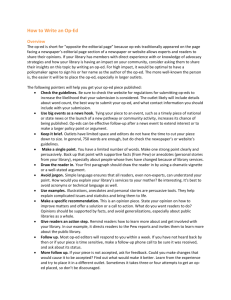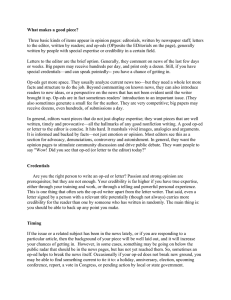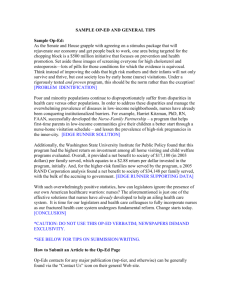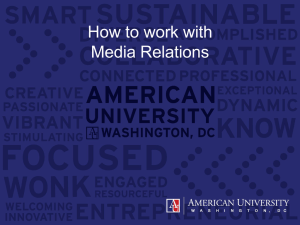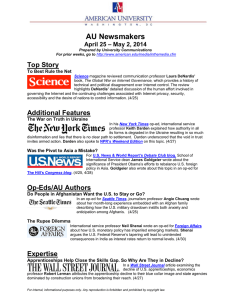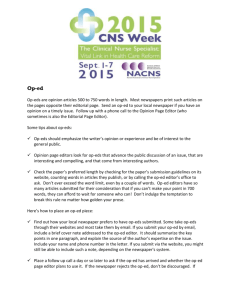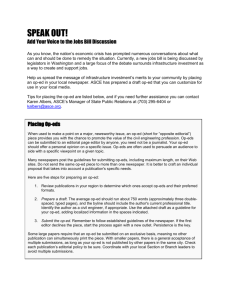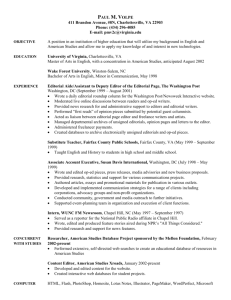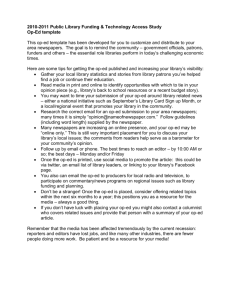Baron FM:IP_Baron
advertisement
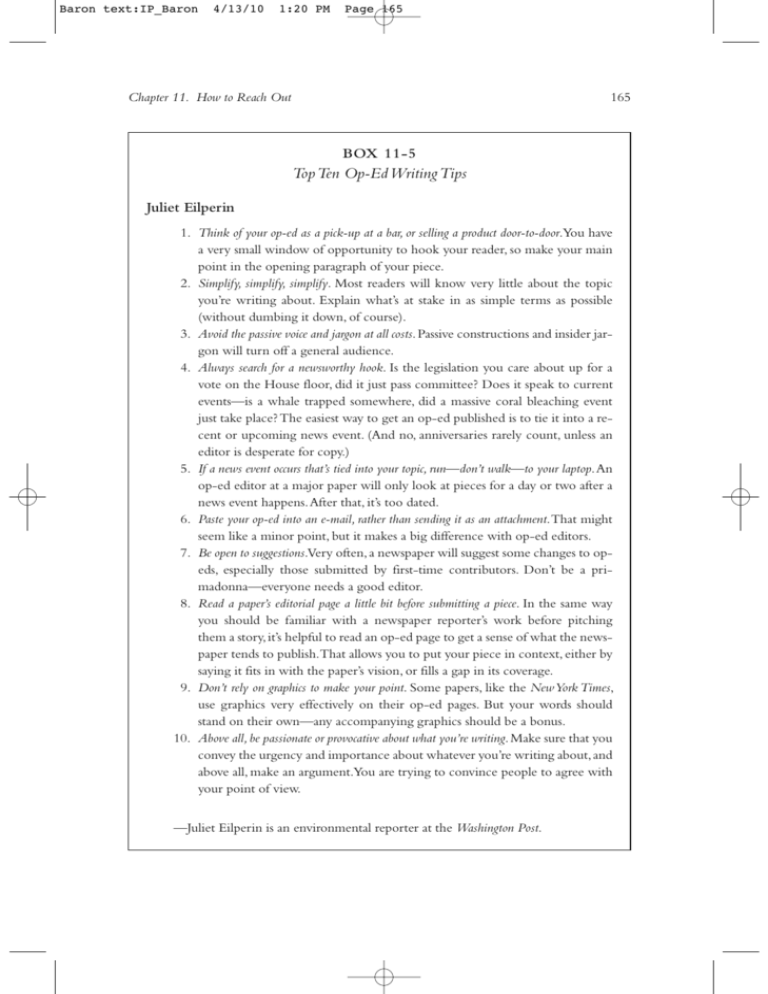
Baron text:IP_Baron 4/13/10 1:20 PM Page 165 Chapter 11. How to Reach Out 165 BOX 11-5 Top Ten Op-Ed Writing Tips Juliet Eilperin 1. Think of your op-ed as a pick-up at a bar, or selling a product door-to-door.You have a very small window of opportunity to hook your reader, so make your main point in the opening paragraph of your piece. 2. Simplify, simplify, simplify. Most readers will know very little about the topic you’re writing about. Explain what’s at stake in as simple terms as possible (without dumbing it down, of course). 3. Avoid the passive voice and jargon at all costs. Passive constructions and insider jargon will turn off a general audience. 4. Always search for a newsworthy hook. Is the legislation you care about up for a vote on the House floor, did it just pass committee? Does it speak to current events—is a whale trapped somewhere, did a massive coral bleaching event just take place? The easiest way to get an op-ed published is to tie it into a recent or upcoming news event. (And no, anniversaries rarely count, unless an editor is desperate for copy.) 5. If a news event occurs that’s tied into your topic, run—don’t walk—to your laptop. An op-ed editor at a major paper will only look at pieces for a day or two after a news event happens. After that, it’s too dated. 6. Paste your op-ed into an e-mail, rather than sending it as an attachment. That might seem like a minor point, but it makes a big difference with op-ed editors. 7. Be open to suggestions.Very often, a newspaper will suggest some changes to opeds, especially those submitted by first-time contributors. Don’t be a primadonna—everyone needs a good editor. 8. Read a paper’s editorial page a little bit before submitting a piece. In the same way you should be familiar with a newspaper reporter’s work before pitching them a story, it’s helpful to read an op-ed page to get a sense of what the newspaper tends to publish.That allows you to put your piece in context, either by saying it fits in with the paper’s vision, or fills a gap in its coverage. 9. Don’t rely on graphics to make your point. Some papers, like the New York Times, use graphics very effectively on their op-ed pages. But your words should stand on their own—any accompanying graphics should be a bonus. 10. Above all, be passionate or provocative about what you’re writing. Make sure that you convey the urgency and importance about whatever you’re writing about, and above all, make an argument.You are trying to convince people to agree with your point of view. —Juliet Eilperin is an environmental reporter at the Washington Post.
